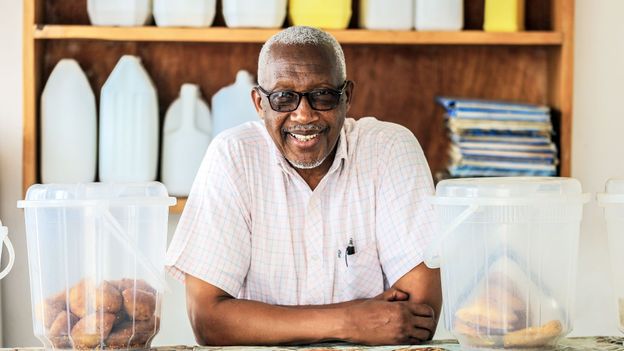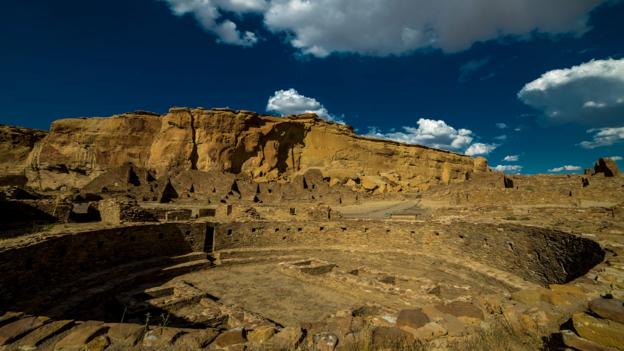Every morning in the lead up to spring, Aivar Ruukel looks outside his bedroom window to see if his favourite season has arrived. If he is in luck, and the weather is right, he has a quick breakfast, grabs a life jacket and paddle from the store and quickly rushes outside to pull his haabjas, or traditional dug-out canoe, up to the water’s edge.
From his vantage point in the craft, a web of routes emerges into view and Ruukel paddles deep into the flooded woodland, entering a half-drowned world of swamped meadows and watery channels. Dawn is the best time to experience the delta, and to jump into his canoe at first light is to see this vast area of spongy mires and paludified forests anew.
I remember my father bringing me here when I was just a child and I’ll never forget it,” Ruukel said, peering ahead into the waterlogged forests. “The woodpeckers knock-knocking in the trees. The flowers poking above the water. The sounds and smells of the new season arriving. Bliss.”
In most places, a weather forecast that predicts heavy rain is a bad day, while a forecast that reports dangerous flash floods is one that no-one wants to hear. Except, that is, if you are a guide like Ruukel and you live in Soomaa National Park, a peatland in south-western Estonia notorious for annual deluges that can be as alarming as 8km wide and 5m high.
Simply put, this is Estonia’s so-called “fifth season”, a predictably volatile period of weather that arrives after winter and before spring every year. No-one can pinpoint exactly on which day it’ll arrive, but this annual phenomenon does so without fail between March and April, bringing with it surging floods that recast the national park as a waterlogged basin of submerged houses, sunken apple orchards and raised bog islands. It is the triumph of water over land, and yet also one of humankind’s will over Mother Nature.
“Every year brings with it new challenges,” said Ruukel, who is now in his 27th season as a canoe guide in the area. “We need to work out where we can paddle safely when the floods arrive – but there is an inherent risk when we’re navigating such cold, moving water. Care needs to be taken.”
On the morning of our meeting, I’d also met another guide, whose research into this annual phenomenon has led to his nickname “Mr Flood”. Algis Martsoo has pioneered “fifth-season tourism” in south-western Estonia, developing a map of detailed canoe itineraries in Soomaa National Park that meander through the peatlands for up to 7km. Navigable routes appear, lending an air of a gigantic slalom course to the whole space, but later vanish when the flood waters seep away. Beforehand, though, everyone becomes obsessive about the life cycle of the fifth season. None more so than Martsoo.
You may also be interested in:
• Are Lithuanians obsessed with bees?
• What will happen to the 7th continent?
• Tallinn’s story, written in the sky
“People are so curious about our fifth season,” said Martsoo, who conducted his doctoral research in 2010 during Estonia’s highest flood waters for half a century, when the overflow reached an astonishing 5m high. “It can feel like canoeing through the Amazon, then you suddenly paddle over the top of a road that is a few metres beneath the surface. Wild, right?”
Martsoo is correct to think that people would be interested in experiencing this flooded land. In recent years, thousands of Estonians have discovered Soomaa’s magical watery highways, and today Mr Flood and Ruukel run Soomaa.com, an outdoors company with a fleet of 40 Canadian-style canoes for adventure tours and self-guided excursions.
As co-owner and founder, Ruukel has explored the length and breadth of the park, from night canoeing in summer to silently watching beavers build lodges to bog-shoeing over Kuresoo, Estonia’s largest peatbog. But it is the anticipation of the flood and thrill of the unknown – casting out onto a floodplain big enough to sink Lower Manhattan – that continues to inspire him. Often, in a regular year, he experiences 3m-high flood waters, while at other times he and Mr Flood can scull through flooded meadows to see common cranes, nesting swans and raccoon dogs stranded on aspen, birch and beech branches. The park’s more formidable fauna – lynx, wolf and brown bear – depart long before the floods arrive.
With its stunted, skeletal trees, the haunting landscape can spook the visitor, but the fifth season is ultimately the result of a conflation of unlikely factors. Soomaa – meaning “land of bogs” – is located in a low-lying basin on the western slopes of the Sakala Uplands and its rivers cannot cope with the vast amount of snowmelt that surges down from the mountains after the winter thaw. The Navesti, Halliste, Raudna, Kopu, Toramaa and Lemmjogi rivers all congregate in Soomaa, but only the Navesti flows onwards and out to the Baltic Sea. The consequence is the creation of the Riisa flood zone, a natural basin covering 175sq km that’s regarded as the largest floodplain in Northern Europe.
Another element that has shaped Soomaa National Park is geology. Once this was an ancient seabed created 12,000 years ago during the last Ice Age, when the Baltic Sea was the Baltic Ice Lake and Western Estonia was a frozen land. Retreating glaciers left behind a great depression characterised by sedimental mires, and nowadays Soomaa remains Europe’s largest intact peat bog system – essentially a humongous natural sponge.
“In summer, the average water flow per second through Soomaa is 5-10 cubic metres,” said Jana Põldnurk, head of hydrology at the Estonian Environment Agency, whom I spoke to via Zoom. “But in the fifth season, it is 10 times higher and the torrent surges up to 100 cubic metres per second. Add to this the fact that an extraordinary 70% of the annual runoff is also around this time and the data is overwhelming.”
Though based in the Estonian capital Tallinn, Põldnurk has witnessed Soomaa’s floods several times and she oversees the team that monitors Riisa station, the closest hydrological monitoring station upstream from the national park. Here, records dating back nearly 100 years show the largest floods in history were logged in the 1930s and 1950s.
I asked her how she felt about the floods, particularly since once the critical water level of 1.5m is breached, Soomaa begins to fill up like a bath. Some see it as dangerous. What about her?
It is possible that in the future Estonia might one day have a sixth season
“There’s always a sense of danger, but that’s tempered by excitement,” said Põldnurk. “Once, I remember being out in a canoe with only water in every direction as far as I could see, and I did not know where the river began and ended. It was such a weird feeling.”
An entirely different impression is felt by those who live in Soomaa. Newspaper reports from 1931, the year the flood hit a record 5.53m high, eulogise past glories and the unbreakable spirit of locals, detailing stories of farmers building rafts for cattle and stockpiling bread for weeks to prevent starvation. Around this time, savvy residents also resorted to building their own temporary suspension and trestle bridges, while a haabjas canoe became the only way to get around.
“The memory of prior floods keeps people aware that at any time there can be a lockdown and they can be stuck in their homes,” said Põldnurk. “Just like we are today because of coronavirus.”
Then as now, the fifth season helps cultivate a deeply emotional landscape. Around 70 people – a mix of foresters and farmers – live permanently within the national park boundaries and all have learnt to put up with the annual deluge. The main roads are overrun, and half of the park’s residents become locked down for up to four weeks while the flood waters dissipate. And yet, it creates a sense of belonging that only someone with a true affinity for the fifth season can understand.
What also unites parties in Soomaa is talk of climate change and how it might soon manifest in even larger, more unpredictable floods. Especially, according to Põldnurk, as the long-term climate scenarios show that annual precipitation is increasing. “Certainly, there’s a change in the characteristics compared to the past century,” she said. “Climate change means the floods can appear at more unusual times – so it is possible that, in the future, Estonia might one day have a sixth season.”
Watching canoeists manoeuvre their crafts through the flooded forest, it was hard to ignore Soomaa’s unique appeal. It is, as Ruukel told me, a wonderful marriage of water, time and place, and for a moment it offered a brief window into some kind of other, more peculiar world.
Join more than three million BBC Travel fans by liking us on Facebook, or follow us on Twitter and Instagram.
If you liked this story, sign up for the weekly bbc.com features newsletter called “The Essential List”. A handpicked selection of stories from BBC Future, Culture, Worklife and Travel, delivered to your inbox every Friday.



























